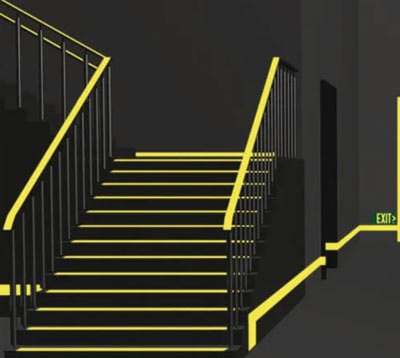Installing Luminous Egress Markings to Comply with Codes
International Building Codes and International Fire Codes now include luminous egress path markings in their codes. In the U.S., the IBC is in use in 50 states, DC, and New York City. Building inspectors and fire code officials enforce the IBC and IFC requirements for installing luminous egress markings.
Egress Path Markings Can Save Lives
In cases of power failure, fire, smoke, or natural disasters, egress markings help people exit a building or parking garage. For example, many people were able to find their way out of the World Trade Center on 9/11 using these markings. Seven years earlier, the terrorist bombing in the WTC’s basement parking garage precipitated the installation markings. Those markings assisted the evacuation of survivors in both Tower I and Tower II. The product the WTC chose was Permalight® photoluminescent markings.
CIP Is a Certified Premium Installer for American Permalight®
American Permalight® is a leading manufacturer of safety products. As a certified installer, CIP can quote and install safety markings on any job. In general, safety markings for egress include marking handrails and perimeters. Additionally, in all exit enclosures, luminous markings must be on steps, landings, handrails, perimeter, obstacles, and doors.
Buildings that Require Installing Luminous Egress Markings
Nationwide, code enforcement applies to the installation of luminous egress markings in high-rise buildings. However, the requirement is not for all high-rises. The high-rise must haveoccupied floors more than 75 feet above the lowest level of fire department vehicle access. High-rise buildings that fall under the code include these occupancy types:
- Assembly
gathering places for civic, social or religious functions - Business
banks, civic administration, professional services - Educational
through 12th grade, e.g. primary and secondary schools - Institutional
places where people are cared for, including hospitals, assisted living, rehab centers, and prisons - Mercantile
places that display of merchandise, e.g. department stores - Hotel / Motel

